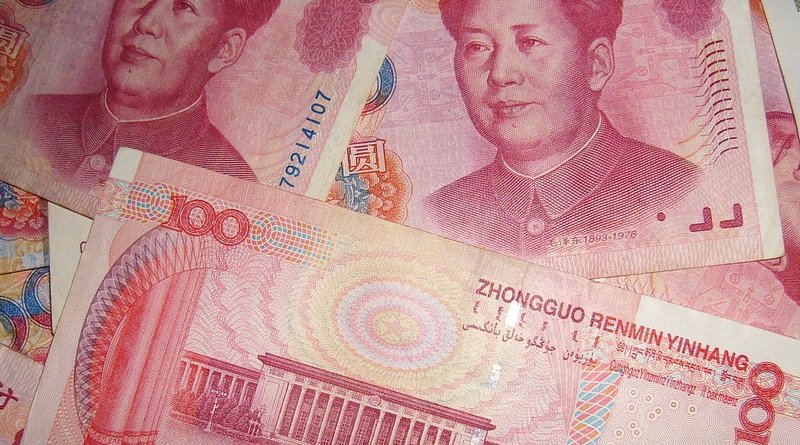China’s Golden Week Sales Exceed Expectations – OpEd
In contrast to gloomy international projections, economic realities suggest that China’s Golden Week may have exceeded expectations.
I spent China’s 70-year National Day festivities in Shanghai, China’s global financial hub, and Guangzhou, the global trade hub of the Guangdong-Hong Kong-Macao Greater Bay Area. In both, China’s massive transition toward consumption and innovation is now an increasing reality.
Due to US tariff wars, Chinese mass consumers – like their peers in the United States, Europe and Japan – are cost-conscious, increasingly discriminate and sophisticated in their spending. Indeed, sales of gold jewelry boomed during the holidays, fueled by gold prices, holiday festivities and the wedding season.
But unlike their counterparts in advanced economies where middle-classes are shrinking, Chinese middle classes continue to grow, expand and consume. That is the great opportunity in China and abroad alike.
The just-ended Golden Week is a case in point.
Golden Week retail sales 8.5% up
In effect, China has two “Golden Week” holidays; the Lunar New Year around January and February, and the National Day week in early October. Both are seen as a barometer for Chinese private consumption, due to gift-giving, family reunions, thriving retail and catering.
Last February, the Lunar New Year showed the slowest increase in years, according to international media. Yet, Chinese retail sales actually rose almost 7% from a year earlier.
Prior to the National Day Golden Week, once again, much of international media expected the trade wars to undermine Chinese holiday sales. And again, they were proved wrong. During the holidays, retail sales growth exceeded China’s growth rate by almost a half, with online sales soaring even higher.
During the Golden Week, Chinese retail and catering businesses saw sales of $213 billion, up 8.5% on the same period last year (spending on consumer services is not yet included, but will be released later in the month). New highlights featured spending on tourism, culture and sports, and “first-store economy”; that is, new brands launching their first brick-and-mortal stores.
These figures do not include the highly-popular discount sales that follow after the Golden Week.
Golden Week tourism revenues 8.5% up as well
Prior to the Golden Week, much of international media expected Chinese consumers to cut back on travel, due to trade wars and weaker yuan. In reality. Chinese people may have spent more than ever before at home and abroad.
During the past week, there were 520 million trips on all modes of transportation, with the number of rail passengers up 5.2% on the same period last year, according to the Ministry of Transport. At home, many visited Beijing, Shanghai, Xi’an, Chengdu, Chongqing and Xiamen. Abroad, the top locations featured Japan, Thailand, Korea, Vietnam, Indonesia, even Australia.
In the first Golden Week in 1999, only 29 million Chinese traveled, and all of them domestically. During the past week, almost 780 million domestic tourists – more than half of the mainland’s population – hit the road for vacations; an increase of 7.8% year-on-year. It was the greatest holiday migration in history.
Domestic tourism revenue soared to more than $90 billion; an increase of 8.5% on an annual basis, according to the Ministry of Culture and Tourism. Alipay, China’s leading and smooth online payment platform, confirmed that catering, travel and retail fueled domestic consumption during the holidays.
Currently, every 10th of the 1.4 billion Chinese holds a passport for international travel; that’s a potential of 140 million potential outbound travelers. With increasing prosperity, that figure is expected to double in the next decade.
Rise of Chinese consumption
No global brand can afford to ignore Chinese market any longer. In 2019, China’s economic growth is likely to be around 6%. Yet, in-store sales are estimated at 9% and online shopping at 24% year on yearly basis, according to KPMG.
Similarly, China’s consumer retail market is no longer a dream of the future. Last year, it grew 8% to $5.3 trillion. The Golden week is the country’s second-biggest shopping bonanza, right after Chinese New Year.
Despite US trade protectionism, Chinese tourists reportedly spent $128 billion overseas in the first half of the year. More than half of that was used in Asia, a fourth in the Americas and much of the rest in Europe. The Golden Week sales suggest that a similar pace will prevail toward year-end.
Last week, the biggest airport in the world was opened in Beijing. It was a prelude to the mid-2020s, when China will surpass the US as the largest aviation market, according to the International Air Transport Association. In two decades, Chinese airports could serve 1.6 billion passengers annually.
As China’s middle classes continue to increase and per capita incomes to grow, domestic and global retail and tourism will be major beneficiaries. China’s rise supports economic prospects at home and abroad. As the Golden Week demonstrated, Chinese consumption is now a global force.
The commentary was released by China Daily on October 10, 2019.

